Consolidation and practice
These resources are to support children in guided or independent work. Roll over the highlighted resources for a description.
Area
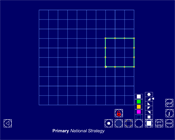
The Area interactive teaching program (ITP) is an ICT-based tool to support the exploration of number, shape and space and problem solving. Area ITP (version 2.2) allows the child or teacher to place counters or colour in whole or part cells on a grid, pinboard or blank screen, or to define a shape using a rubber band.
Fixpoints
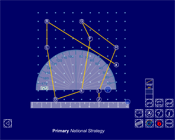
This interactive teaching program (ITP) is an ICT-based tool to support the exploration of shape and space. Fixing points ITP allows the child or teacher to create one or more shapes by connecting a number of vertices on a grid. Angles can be estimated and measured, and the effect of moving different vertices can be explored.
Polygon
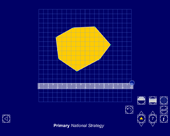
This interactive teaching program (ITP) is an ICT-based tool to support the exploration of shape, space and measure. Polygon ITP allows the child or teacher to represent regular polygons with three to ten sides. The ITP can then be used to explore the properties of regular and irregular shapes by dragging vertices and creating additional vertices. The ITP includes an on-screen protractor and ruler.
Isogrid
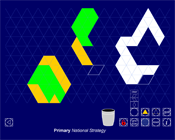
This interactive teaching program (ITP) is an ICT-based tool to support the exploration of shape and space. Isometric grid ITP allows the child or teacher to display equilateral triangles. The grid can be hidden or become an isometric pin board. An elastic band can be stretched around the pins to create outlines. Rhombuses can be selected and dragged to different positions on the grid, and then locked together to form representations of 3-D shapes.
Opportunities to use and apply
Possible contexts include:
- shape problems and puzzles, e.g. Is it possible for a triangle to contain two right angles?
- classifying and sorting shapes, e.g. One of the shapes does not belong in this set. Find the odd one out. Explain how you found it.
- measurement, e.g. Draw a rectangle that is twice as long as it is wide. How did you go about this?
- art/design technology, e.g. Use shapes on an ICT package to create a symmetrical logo and describe how you made it.
- data handling, e.g. Position and name a set of 3-D shapes in the correct place on this Carroll diagram.
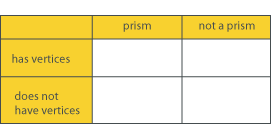
Confirming learning
Ask probing questions such as:
- I dip a triangular prism in paint and make a print of each face. What shapes will I print?
- How many different shapes can you make by placing these two identical right-angled triangles edge to edge? How do you know you have found them all? Describe each shape.

- Use cubes to make these shapes.

- To draw a picture of a cube, would you use straight or curved lines? What about a cylinder?
-
From a set of 2-D shapes, find and name a shape that:
- has at least one right angle
- has line symmetry.

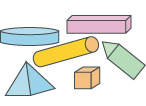
 Understanding shape
Understanding shape






